- About Us
- Columns
- Letters
- Cartoons
- The Udder Limits
- Archives
- Ezy Reading Archive
- 2024 Cud Archives
- 2023 Cud Archives
- 2022 Cud Archives
- 2021 Cud Archives
- 2020 Cud Archives
- 2015-2019
- 2010-2014
- 2004-2009
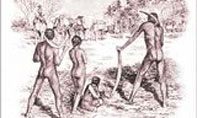 |
The Cud On Australian History: A Look At Henry Reynolds’ The Other Side Of The Frontier |
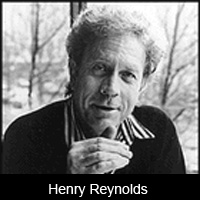 Until relatively recently, the national history of Australia had been essentially the history of white settlement since 1788, and only popular histories made some mention (albeit briefly) of the history of the Aboriginal Australians.1 The sum result of this somewhat limited scope in Australian history was that it was not until the 1960's and particularly the 1970's that emphasis shifted towards professionalising indigenous history and attempts began to determine the appropriate context in which these first Australians should be recognised and expressed in our national and historical consciousness.2 Peter Biskup has quite correctly argued that "historians, like everyone else, do not exist in a vacuum but reflect the values of the society they live in",3 and Henry Reynolds certainly published his landmark study, The Other Side of the Frontier,4amid a period of great change and transformation for the indigenous Australian people. Reynolds' book offered an original insight into indigenous resistance in the colonial era and served both historical and political purposes upon its publication in 1981. Although the study attracts some criticism, most particularly for its concentration upon the theme of resistance at the expense of examining instances of collaboration and cooperation by the indigenous with white settlers, it is still an analysis of considerable value, if not merely for the issues it has raised which have helped to shatter the mythology of indigenous passivity and helplessness in the late eighteenth and early nineteenth centuries.5
Until relatively recently, the national history of Australia had been essentially the history of white settlement since 1788, and only popular histories made some mention (albeit briefly) of the history of the Aboriginal Australians.1 The sum result of this somewhat limited scope in Australian history was that it was not until the 1960's and particularly the 1970's that emphasis shifted towards professionalising indigenous history and attempts began to determine the appropriate context in which these first Australians should be recognised and expressed in our national and historical consciousness.2 Peter Biskup has quite correctly argued that "historians, like everyone else, do not exist in a vacuum but reflect the values of the society they live in",3 and Henry Reynolds certainly published his landmark study, The Other Side of the Frontier,4amid a period of great change and transformation for the indigenous Australian people. Reynolds' book offered an original insight into indigenous resistance in the colonial era and served both historical and political purposes upon its publication in 1981. Although the study attracts some criticism, most particularly for its concentration upon the theme of resistance at the expense of examining instances of collaboration and cooperation by the indigenous with white settlers, it is still an analysis of considerable value, if not merely for the issues it has raised which have helped to shatter the mythology of indigenous passivity and helplessness in the late eighteenth and early nineteenth centuries.5
Whilst the nineteenth century produced considerable scholarship documenting the history of contact between the indigenous and Europeans in Australia, by the close of the century interest in such histories had faded, and the main reason for this development was the presumption that the indigenous peoples were a dying race who would hold no place in the 'professionalised' histories of the twentieth century.6 The "great Australian silence" in indigenous history that followed these circumstances confined academic interest in Aboriginal Australian’s development and origins principally to anthropological circles,7and professional historians, preoccupied with European events, especially after World Wars One and Two, largely ignored indigenous history. By the late 1960's, however, in the aftermath of the failed assimilationist policies of the 1930's, indigenous history took a new direction.
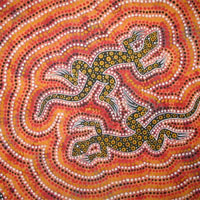 Writing in 1972, Henry Reynolds identified a number of factors that were influencing what he called the "coming in" of the indigenous into Australian history.8 In the political and social context of the 1960's, encouraged by developments in civil rights abroad, indigenous Australians now began to contribute towards a reassessment of themselves in local history, attempting to give the indigenous race a greater voice in history, and a character which was independent of that which the nation had previously allowed. Above all, the indigenous showed greater political awareness from the 1960's, and they embarked upon several "unprecedented political activities" and demanded radical change, as symbolised in the activities of the young Aboriginals' Black Panther Party, the land right demands of the Northern Territory Gurindji and the Yirrakala, and the Federal Council for the Advancement of Aborigines and Torres Strait Islanders, established during this period.9
Writing in 1972, Henry Reynolds identified a number of factors that were influencing what he called the "coming in" of the indigenous into Australian history.8 In the political and social context of the 1960's, encouraged by developments in civil rights abroad, indigenous Australians now began to contribute towards a reassessment of themselves in local history, attempting to give the indigenous race a greater voice in history, and a character which was independent of that which the nation had previously allowed. Above all, the indigenous showed greater political awareness from the 1960's, and they embarked upon several "unprecedented political activities" and demanded radical change, as symbolised in the activities of the young Aboriginals' Black Panther Party, the land right demands of the Northern Territory Gurindji and the Yirrakala, and the Federal Council for the Advancement of Aborigines and Torres Strait Islanders, established during this period.9
At the time, Reynolds forwarded his belief that these developments would eventually "...reverberate into the quietest scholarly retreat" and influence those historical circles of academia which had been so resistant to change.10 Anthropologists had already served an important role by the 1970's in reviving interest in indigenous Australian history, dispelling many of the myths and misconceptions about indigenous civilisation and development, however the period now witnessed a widespread change in Australia's intellectual orientation and there was a far greater awareness shown in scholastic circles of Australia's own racial traditions.11 It was within the context of these critical developments in Australia, then, that Henry Reynolds wrote "... a new deal for the indigenous will ultimately depend not only on socio-economic innovation, but also on a basic readjustment of our world outlook and, as a corollary, a reinterpretation of our history."12 The Other Side of the Frontier was a direct consequence of such sentiment.
Prior to Reynolds' compelling study into indigenous resistance, the image of Aboriginal Australian passivity in the face of European settlers had long been maintained within the popular mythology from the early colonial period. W.E.H Stanner forwarded that this had been partly due to the impact on the white public's consciousness of such factors as the homelessness, powerlessness, poverty, and the continued disparity between plans and styles of life that had plagued many indigenous communities in Australia for so long, most noticeably during the course of the twentieth century.13 Nonetheless, Reynolds has been credited with helping to deconstruct this myth.14 The Other Side of the Frontier presents, in a structured and clear manner, evidence of the indigenous Australian’s first contact with the white man and Western technology, and details their various forms of resistance, which ranged from active warfare against settlers, to surveillance, revenge parties, economic warfare, or a combination of traditional bush craft tactics with the use of white technologies (such as firearms) against the white man himself.15 What emerges from a reading of Reynolds' study is that the indigenous people certainly absorbed far more of white civilisation than is widely thought (language, technology, etc ...), and that the issue of land ownership was obviously the most contentious matter upon the arrival of white settlers.16
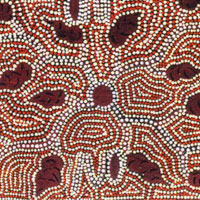 Reynolds traveled widely to research The Other Side of the Frontier, and he made extensive use of indigenous oral histories and the works of early white settlers in preparing his study. Enormous obstacles confront the scholar who is seeking a review of race relations in Australia. The very nature of indigenous society, fragmented and diverse, creates difficulties for the gathering of evidence, as does the obvious matter that they were pre-literate and left no written evidence of their view of the contact situation.17 Reynolds recognised the need to study Aboriginal history with an interdisciplinary approach, and his study therefore reflects a combination of influences from anthropological, archaeological and also ecological spheres.18 Although The Other Side of the Frontier is therefore far removed from many of the inferior texts on indigenous history that have been published in the past (particularly in the 1970's),19 the study still contains flaws which must be identified.
Reynolds traveled widely to research The Other Side of the Frontier, and he made extensive use of indigenous oral histories and the works of early white settlers in preparing his study. Enormous obstacles confront the scholar who is seeking a review of race relations in Australia. The very nature of indigenous society, fragmented and diverse, creates difficulties for the gathering of evidence, as does the obvious matter that they were pre-literate and left no written evidence of their view of the contact situation.17 Reynolds recognised the need to study Aboriginal history with an interdisciplinary approach, and his study therefore reflects a combination of influences from anthropological, archaeological and also ecological spheres.18 Although The Other Side of the Frontier is therefore far removed from many of the inferior texts on indigenous history that have been published in the past (particularly in the 1970's),19 the study still contains flaws which must be identified.
The first aspect of Henry Reynolds' study that must be examined is his political motivation for writing the book, which has already been discussed. Reynolds openly admits in his introduction that the book "... was not conceived, researched or written in a mood of detached scholarship. It is inescapably political."20 The problem with such an approach is that aspects of Reynolds' book contain an air of reconciliation and sympathy for the indigenous people’s plight which conflicts with the historian's need to maintain some degree of objectivity.21 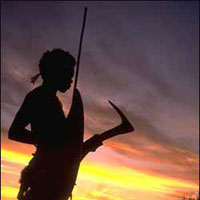 Related to this issue is Reynolds' emphasis upon resistance at the expense of discussing instances of Indigenous Australia’s accommodation and cooperation with the European settlers. Bob Reece has discussed at some length the danger of reading Reynolds' history without a knowledge of the period in which it was written and the political motivations behind the study,22 although, it must be said, Reynolds did make some mention of accommodation in the study,23 and his 1990 book With the White People, written in what was perhaps a more reflective period of relatively low-key Indigenous Australian political action focused directly upon the issue of collaboration.24
Related to this issue is Reynolds' emphasis upon resistance at the expense of discussing instances of Indigenous Australia’s accommodation and cooperation with the European settlers. Bob Reece has discussed at some length the danger of reading Reynolds' history without a knowledge of the period in which it was written and the political motivations behind the study,22 although, it must be said, Reynolds did make some mention of accommodation in the study,23 and his 1990 book With the White People, written in what was perhaps a more reflective period of relatively low-key Indigenous Australian political action focused directly upon the issue of collaboration.24
A common criticism of Indigenous Australian histories has often been that the European historian must accept his or her inability to speak directly for the indigenous peoples due to the very nature of their background. That is, "... all production of knowledge about the other involves an act of translation which distorts the lived experience and the worldview of that other."25 In this respect, Henry Reynolds perhaps shares a problem that all European historians writing about Aboriginal Australian history must consider- they must attempt to avoid the distorted view of European observation.26 Reynolds is careful to clarify that he intended his book to be aimed primarily at a white audience,27 but it is also worth considering the notion that in terms of our own culture and our own way of understanding, existing forms of indigenous history (the passing down of oral history from one elder to another) are not acceptable or perhaps not even capable of appropriate translation into our 'Western' approach to history.
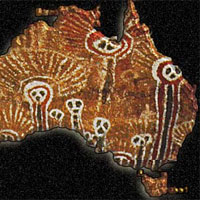 Henry Reynolds' history, The Other Side of the Frontier is clearly a study that was written with political intentions. This does not take away from the fact, however, that Reynolds produced a penetrating study that helped to change popular misconceptions about the nature of Indigenous Australia’s early contact with white settlers. Resistance was a theme that had not adequately been dealt with prior to Reynolds' book, and he has contributed significantly in advancing the status of indigenous history in Australia beyond a mere "melancholy anthropological footnote".28 Considerable work must still be completed if the field of Indigenous Australian history is to progress even further, but it is certainly apparent that Henry Reynolds' work has set a standard that has improved the direction of indigenous historiography.29
Henry Reynolds' history, The Other Side of the Frontier is clearly a study that was written with political intentions. This does not take away from the fact, however, that Reynolds produced a penetrating study that helped to change popular misconceptions about the nature of Indigenous Australia’s early contact with white settlers. Resistance was a theme that had not adequately been dealt with prior to Reynolds' book, and he has contributed significantly in advancing the status of indigenous history in Australia beyond a mere "melancholy anthropological footnote".28 Considerable work must still be completed if the field of Indigenous Australian history is to progress even further, but it is certainly apparent that Henry Reynolds' work has set a standard that has improved the direction of indigenous historiography.29
BIBLIOGRAPHY:
Attwood, Brian., and Arnold, John. "Power, Knowledge and Aborigines", Special Edition, Journal of Australian Studies, 1992.
Markus, Andrew. "Through A Glass, Darkly: Aspects of Contact History", Aboriginal History, Vol.1, No. 3, 1987.
Osborne, G., and Mandle, W.F. New History- Studying Australia Today, George Allen and Unwin, 1982.
Reece, R.H.W. "Inventing Aborigines", Aboriginal History, Vol.11, No. 1, 1987.
Reynolds, Henry. Aborigines and Settlers: The Australian Experience, 1788-1939, Problems in Australian History Series, Cassell Australia Ltd., 1972.
Reynolds, Henry. The Other Side of the Frontier, Penguin Books, 1981.
Reynolds, Henry. "The Breaking of the Great Australian Silence: Aboriginals in Australian Historiography, 1955-1983", Trevor Reese Memorial Lecture, University of London, 1984.
Reynolds, Henry. The Law of the Land, Penguin Books, 1987.
Reynolds, Henry. Aboriginal Land Rights in Colonial Australia, National Library of Australia, , 1988.
Reynolds, Henry. With the White People, Penguin Books, 1990.
Stanner, W.E.H. After the Dreaming, Boyer Lectures, Sydney, 1968.
ENDNOTES:
- Note the discussion of the inadequacy of early texts on Aboriginal history in W.E.H Stanner, "The Great Australian Silence", After the Dreaming, Boyer Lectures, Sydney, 1968, pp.18-29, see especially pp.22-24.
- Peter Biskup, "Aboriginal History", in G. Osborne and W.F Mandle, New History- Studying Australia Today, George Allen and Unwin, 1982, p.17.
- Ibid., p.14.
- Henry Reynolds, The Other Side of the Frontier, Penguin Books, 1981.
- R.H.W Reece, "Inventing Aborigines", Aboriginal History, Vol.11, No. 1, 1987, p.17.
- Andrew Markus, "Through A Glass, Darkly: Aspects of Contact History", Aboriginal History, Vol.1, No. 3, 1987, p.170. Peter Biskup elaborated that at the turn of the century "...what influenced white Australians' (and their historians') attitudes most was the belief that the Aboriginals were dying out, that they were a doomed race bound to fade away before a superior civilization, in obedience to natural processes and inexorable laws of progress." Biskup, op.cit., p.13.
- Stanner, op.cit., p.18.
- Henry Reynolds, Aborigines and Settlers: The Australian Experience, 1788-1939, Problems in Australian History Series, Cassell Australia Ltd., 1972, p.x.
- Ibid., p.176. Note also the discussion in Bain Attwood and John Arnold, "Power, Knowledge and Aborigines", Special Edition, Journal of Australian Studies, 1992, p.x.
- Ibid., pp.x-xi.
- This was also a recognition which was in no small way influenced by the very reality that the Aboriginal race had not died out as had been predicted late in the nineteenth century, and there was a growing need to come to terms with the fact that Australians would have to shape their attitudes to suit an environment where they must share their country with the Aboriginals. Ibid., p.xi.
- Ibid., p.xi.
- Stanner, op.cit., p.49.
- Noel Loos has also been credited with having "... served a useful purpose in overthrowing the notion that the Aborigines simply 'faded away' ." Reece, op.cit., p.17.
- Reynolds, The Other Side of the Frontier, op.cit., pp.96-127.
- The fact that he later devoted an entire book to this area in The Law of the Land suggests that land ownership was also a very complex issue deserving of more detailed examination. See Henry Reynolds, The Law of the Land, Penguin Books, 1987, also Henry Reynolds, Aboriginal Land Rights in Australia, National Library of Australia, , 1988.
- Markus, op.cit., p.176.
- Note Reynolds' discussion of the interdisciplinary approach to Aboriginal history in Reynolds, Aborigines and Settlers: The Australian Experience, 1788-1939, op.cit., p.xi.
- Biskup, op.cit., p.21.
- Reynolds, The Other Side of the Frontier, op.cit., p.1.
- This is most clearly apparent in his discussion of "Three Celebrated Attacks", which offers some degree of justification for successful Aboriginal attacks against white settlers in 1840, 1857 and 1861. Ibid., pp.78-82.
- Reece, op.cit., pp.14-23.
- Henry Reynolds, The Other Side of the Frontier, op.cit., p.169-171.
- In the 1990 book he writes: "... I was fully aware that resistance, for all its importance, was only part of the story, that for every tribesman and woman who defied the whites there were others who worked for the interlopers assisting in the process of colonisation, that collaboration was as common as confrontation." Henry Reynolds, With the White People, Penguin Books, 1990, p.1.
- Attwood, op.cit., p.xii.
- Reynolds, Aborigines and Settlers: The Australian Experience, 1788-1939, op.cit., p.xi.
- Henry Reynolds, The Other Side of the Frontier, op.cit., p.1.
- J.A La Nauze, 1959, quoted in Henry Reynolds, "The Breaking of the Great Australian Silence: Aboriginals in Australian Historiography, 1955-1983", Trevor Reese Memorial Lecture, University of London, 1984, p.3.
- More work must, for instance, be done into local studies and specific issues of relevance to Aboriginal history (such as the nature of Aboriginal-European conflict in general), serious biographies and reinterpretations of important Aboriginals must be completed, more comparative studies need to be made, but, above all, "... we need to accept that there is work to be done rather than to be called for". Biskup, op.cit., p.28.
